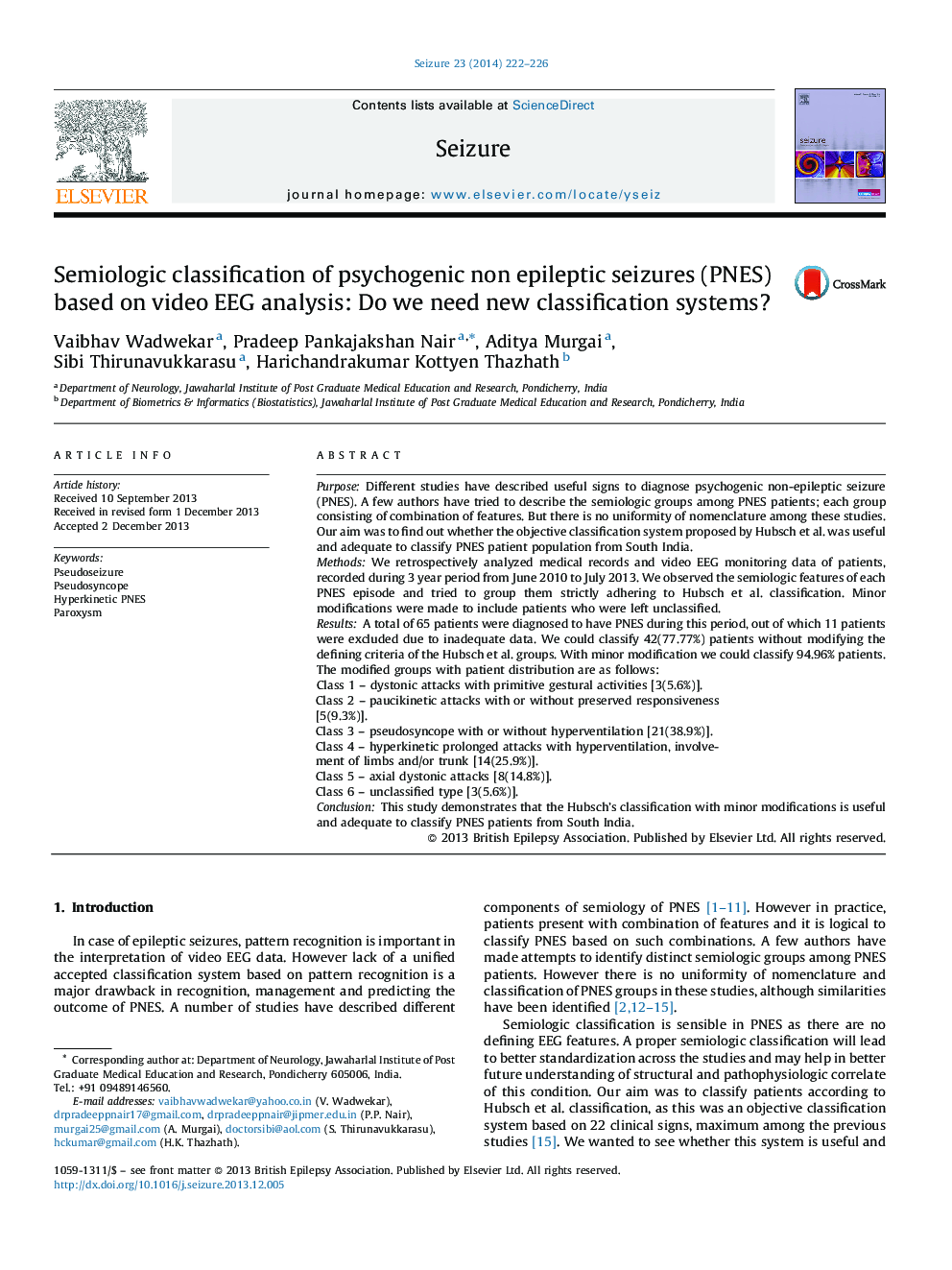| کد مقاله | کد نشریه | سال انتشار | مقاله انگلیسی | نسخه تمام متن |
|---|---|---|---|---|
| 342472 | 548827 | 2014 | 5 صفحه PDF | دانلود رایگان |

PurposeDifferent studies have described useful signs to diagnose psychogenic non-epileptic seizure (PNES). A few authors have tried to describe the semiologic groups among PNES patients; each group consisting of combination of features. But there is no uniformity of nomenclature among these studies. Our aim was to find out whether the objective classification system proposed by Hubsch et al. was useful and adequate to classify PNES patient population from South India.MethodsWe retrospectively analyzed medical records and video EEG monitoring data of patients, recorded during 3 year period from June 2010 to July 2013. We observed the semiologic features of each PNES episode and tried to group them strictly adhering to Hubsch et al. classification. Minor modifications were made to include patients who were left unclassified.ResultsA total of 65 patients were diagnosed to have PNES during this period, out of which 11 patients were excluded due to inadequate data. We could classify 42(77.77%) patients without modifying the defining criteria of the Hubsch et al. groups. With minor modification we could classify 94.96% patients. The modified groups with patient distribution are as follows:Class 1 – dystonic attacks with primitive gestural activities [3(5.6%)].Class 2 – paucikinetic attacks with or without preserved responsiveness [5(9.3%)].Class 3 – pseudosyncope with or without hyperventilation [21(38.9%)].Class 4 – hyperkinetic prolonged attacks with hyperventilation, involvement of limbs and/or trunk [14(25.9%)].Class 5 – axial dystonic attacks [8(14.8%)].Class 6 – unclassified type [3(5.6%)].ConclusionThis study demonstrates that the Hubsch's classification with minor modifications is useful and adequate to classify PNES patients from South India.
Journal: Seizure - Volume 23, Issue 3, March 2014, Pages 222–226